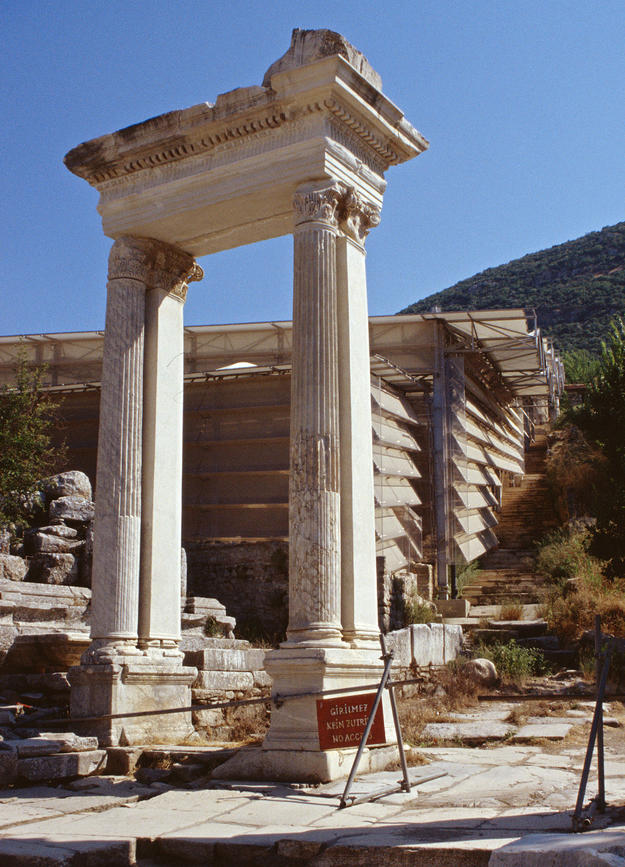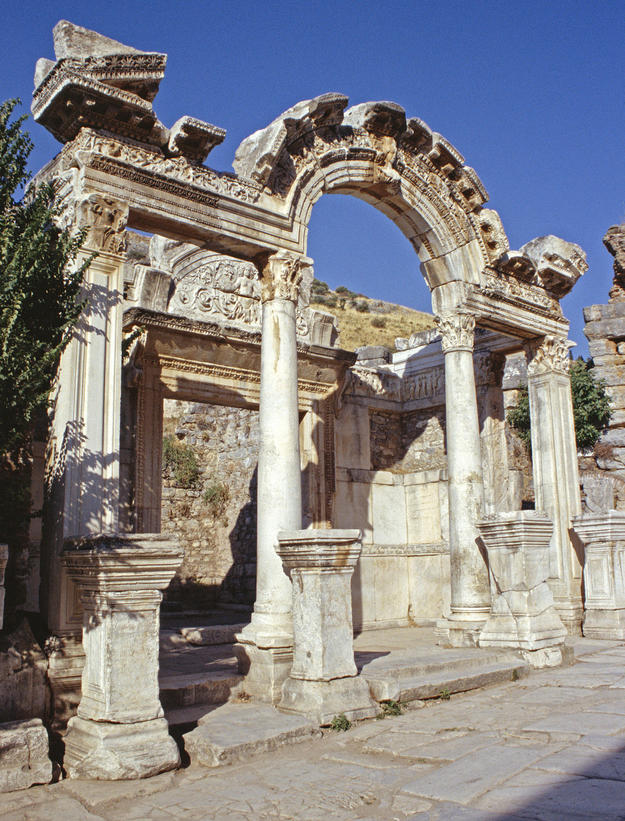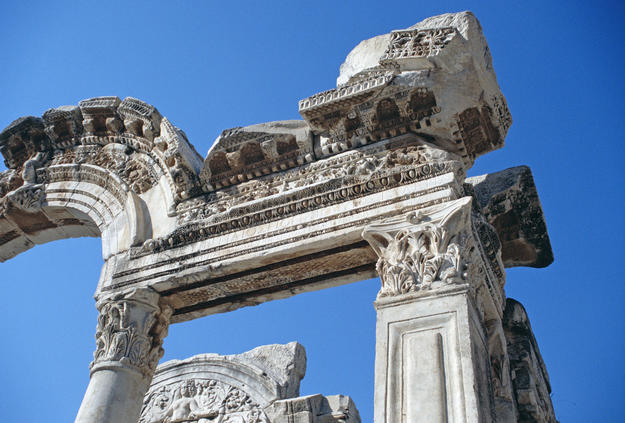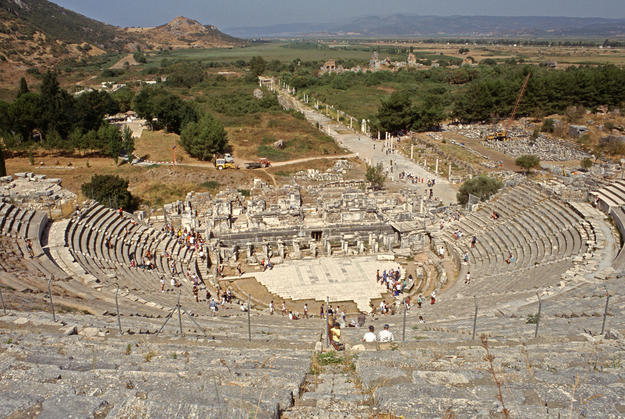Ephesos Archaeological Site
The ancient city of Ephesos (also known as Ephesus) has a rich history dating back to 6000 B.C. In the eighth century B.C., Ephesos became one of 12 major Ionian cities. During this era, construction began on the Temple of Artemis, which was destroyed by Herostratus in the fourth century BC and attacked once more by the Goths in the 3rd century AD. Its final reconstruction was in the fourth century and is one of the most significant structures at Ephesos today and considered to be one of the Seven Wonders of the Ancient World. During the Roman Empire the port city of Ephesos was the most densely populated and wealthy city of Asia Minor, as well as an important commercial center. However, by the early fifth century, uncontrolled silt from the river made the port of the city useless. While settlements continued through the Byzantine era and the Middle Ages, the city never regained its importance until the archaeological discoveries of the nineteenth and twentieth century made the ancient city of Ephesos once again the focus of great attention. Its architectural riches and complex history have made it an important destination for scholars and travelers for more than a century.
2004 World Monuments Watch
The vast archaeological site of Ephesos and its adjacent historical and cultural artifacts face several protection, management, and administrative challenges. The great success of Ephesos as a tourism destination has placed parts of the archaeological site under great stress. In 2000, interest in nominating Ephesos as a World Heritage Site brought to light the need to create a management plan for the site that would address ongoing maintenance of the site, continuing research and conservation needs, tourism management and site interpretation. Ephesos Archaeological Site was included on the 2004 World Monuments Watch in further recognition of the tourism management needs of the site. WMF supported the development of a management and conservation plan for the site and its environment. The project included a feasibility study focusing on the classical remains that form the core area of tourist interest at Ephesos. WMF’s work assisted the Ministry of Tourism and Antiquities with identifying specific areas within the site that required additional protection. Site managers continue to struggle with balancing the needs of excavators, researchers, conservators, and tourists.
Ephesos is one of the largest and best-preserved cities from the classical period and is one of the leading archaeological sites in the Mediterranean. The numerous cultural, historical, artistic, and natural assets of the site vividly illustrate the region’s complex history. Ephesos hosts an impressive variety of archaeological ruins that narrate the main cultural periods of Anatolia and provide insight into everyday life in the ancient city. Through the implementation of a proper management plan, Ephesos could utilize its existing resources to achieve a coherent balance between the needs of both archaeologists and tourists without compromising its historical integrity.




